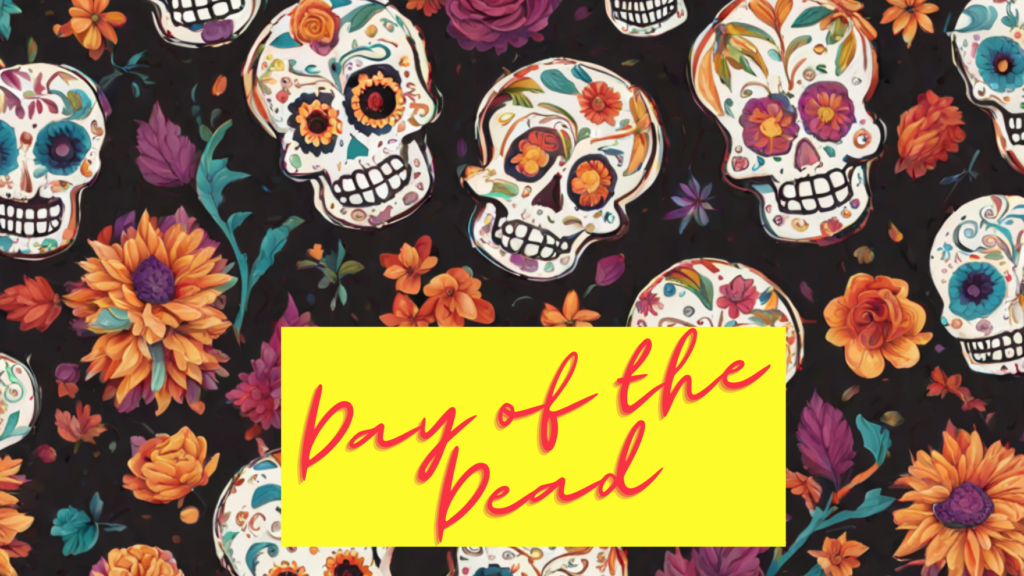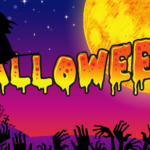Day of the Dead (Dia De Los Muertos) origins, significance, and traditions, celebration
The Day of the Dead, or “Día de los Muertos” in Spanish, is a vibrant and meaningful celebration that honors the memory of departed loved ones. It is a unique cultural tradition celebrated primarily in Mexico but also observed in other parts of the world with Mexican communities. Day of the Dead is a special tradition in Mexico that’s been around for a very long time. It’s a time when people remember those who have passed away and honor their memory. Unlike Halloween, which is about scaring away spirits, the Day of the Dead is all about showing respect and love to the people we miss.

This article will explore the origins, significance, and traditions of the Day of the Dead, shedding light on the cultural richness and symbolic importance of this colorful and heartfelt festival.
What is the Day of the Dead?
The Day of the Dead is a special Mexican holiday that happens on November 1st and 2nd. It’s the same time as two other holidays, All Saints’ Day and All Souls’ Day. During this time, families gather to remember their loved ones who have passed away. They make special altars called ofrendas with candles, marigold flowers, sugar skulls, and the favorite foods and drinks of the people they miss. They believe these altars help the spirits of their loved ones come back to visit the living for a little while.
Why it is celebrated:
The Day of the Dead is a special time to remember and celebrate our loved ones who have passed away. It’s a mix of old beliefs from the Aztec people and Catholic traditions. It all started with the Aztecs having a festival for the goddess Mictecacihuatl, who was in charge of the dead. When the Spanish came to the Americas, they brought their own customs, like All Saints’ Day and All Souls’ Day. These customs mixed with the Aztec ones and became the Day of the Dead.
This celebration is bright and joyful, unlike some other cultures that are more serious about death. It helps people deal with their sadness and reminds them that death is a part of life, not something to be scared of.
When Day of the Dead?
The Day of the Dead takes place on November 1st and 2nd. These are the days when it’s believed that the spirits of the deceased come back to visit their families. November 1st dedicated to deceased children (Día de los Inocentes or Día de los Angelitos) and November 2nd to deceased adults. It coincides with the Catholic holidays of All Saints’ Day and All Souls’ Day, but the Mexican celebration incorporates indigenous traditions and symbolism, making it a unique and culturally rich observance.
Origins of Day of the Dead:
The origins of the Day of the Dead can be traced back to ancient Mesoamerican civilizations, particularly the Aztecs, who had a month-long celebration dedicated to the goddess Mictecacihuatl. After the Spanish conquest in the 16th century, Catholicism was introduced to the indigenous populations, leading to the fusion of Catholic and indigenous beliefs and rituals. The result was the modern celebration of the Day of the Dead, blending Catholic elements with the Aztec reverence for life and death.
Day of the Dead Traditions:
- Ofrendas (Altars): Families create ofrendas on which they place photographs of the deceased, along with their favorite foods, drinks, and mementos. These altars serve as a welcoming place for the spirits to return and enjoy the offerings.
- Calaveras (Sugar Skulls): Elaborate and colorful sugar skulls are a common sight during Day of the Dead festivities. These are often decorated with the names of the deceased and given as gifts or used as decorations.
- Marigolds: Marigolds, known as cempasúchil in Spanish, are believed to guide the spirits with their vibrant color and fragrance. They are often used to decorate altars and graves.
- Candlelight Vigils: Families gather at cemeteries to clean and decorate the graves of their loved ones. Candles are lit to guide the spirits and provide a warm, inviting atmosphere.
- Face Paint and Costumes: People, both young and old, paint their faces to resemble skulls and dress in colorful clothing and costumes. This is done to honor and celebrate the continuity of life beyond death.
Who Celebrates Day of the Dead?
The Day of the Dead is most famous in Mexico, where it’s a big national holiday. But people from Mexico who now live in other countries also celebrate it. You can find Day of the Dead celebrations in the United States, some places in Central America, and anywhere with many Mexican people. This special holiday is so important that even UNESCO, which is like a group that protects culture, says it’s an important part of our world heritage.
While it’s most famous in Mexico, other countries also have their own versions of this holiday. In the Philippines, they call it Undas and celebrate it on the same days. In Haiti, it’s called Fèt Gede, and people dress up and have parades
10 Facts About Day of the Dead
- Day of the Dead, or Día de los Muertos, is a Mexican tradition to remember and honor those who have passed away.
- It takes place on November 1 and 2, when it’s believed that the spirits of the dead visit their families.
- Other countries also have similar traditions, like the Philippines and Haiti.
- The holiday has its origins in Indigenous traditions and was influenced by Catholicism brought by the Spanish.
- People visit graves, clean and decorate them, and often have a joyful atmosphere.
- Some places have parades and face painting, with a famous character called La Catrina.
- Ofrendas are special altars set up with photos, colorful decorations, marigold flowers, and candles.
- Pan de muerto, sugar skulls, and the deceased’s favorite items are placed on the ofrenda.
- The ofrenda serves as a way to remember and honor the deceased.
- Day of the Dead is a unique and beautiful way to celebrate and keep the memory of loved ones alive.
The Day of the Dead is a captivating and deeply meaningful celebration that bridges the gap between life and death. It serves as a reminder that our departed loved ones continue to live on in our memories and hearts. This unique Mexican tradition reflects the country’s rich cultural tapestry and provides a beautiful way to remember and honor the deceased while celebrating the joy and beauty of life.






